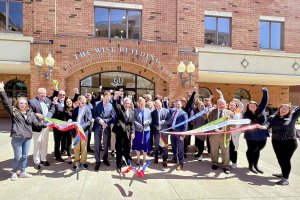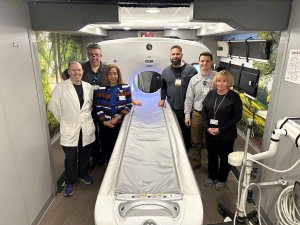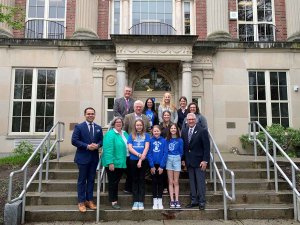As some schools rush to arm their students each with their own iPad, replace chalkboards with SMART boards and television screens to create an interactive, technologically-driven educational experience, others like the Waldorf School of Saratoga Springs favor interactions between teachers and students over interactive experiences between students and computer screens.
The use of technology in schools, especially as such technology becomes cheaper and easier for districts to acquire, has become more commonplace with each passing day. But for parents like Douglas Reamer, who worked for the State of New York as the Chief Economist for Labor and the Chief of Work Development and relied heavily on technology, sending his children to the tech-free Waldorf Elementary School was a no-brainer.
“Technology is just a tool – like a calculator, for you to use. The most important thing is you have to learn how to understand patterns,” said Reamer, whose two daughters have graduated from the Waldorf system. “Understanding those patterns and learning how to think and make connections is key – the actual computer itself is kind of a meaningless tool without the ability to understand those connections or to think for yourself.”
Not that Waldorf believes children should never be introduced to technology. In fact, argue the school’s administrators, technology can be extremely useful to students at the appropriate age, usually at the high school level. But for developing minds at the elementary and middle schools, Waldorf worries that technology can in many ways replace a child’s imagination, which in turn stifles creative, original thought.
“Looking at children and how they develop, we try to support their capacities to think through their own concrete experiences,” said Abigail Reid, a third grade teacher at Waldorf School with 12 years of teaching experience. “Technology is something that is an abstraction and is appropriate at a later time in a student’s development. But at the younger age, we like to give them a lot of real life, hands-on experience, which helps them to really digest the material.”
Instead of using an app or computer program to learn about measurements, Reid and her class will learn about cups and quarts while baking and cooking. Instead of using a program to simulate building a structure to meet specifications, the children learn how to physically take measurements to build a small teepee from trees the class gathered in Reid’s own backyard. It’s by experiencing these lessons first hand, and not as filtered through a screen, that Waldorf argues leads to a deeper, more meaningful understanding.
For Administrative Manager Katherine Scherff, the process is similar to what happens when someone reads a book as compared to seeing the movie.
“When you read a book, many times you have a whole picture of what that book was like in your head,” said Scherff. “But then the moment you see it in the movie, now it’s somebody else’s picture. Your [idea] is all gone.”
Scherff argues that one of the dangers inherent with introducing children to technology while they’re still developing is that their ability to think creatively or to use their imagination is greatly diminished. Technology, in this regard, acts like a shortcut – handing us the Hollywood version of a story on the silver screen instead of asking us to imagine the story for
ourselves.
“As students get older, the skills that allow them to creatively think through a process and to really understand that process may not be there,” said Scherff. “I think that technology can hamper a student’s ability to be able to do that.”
And perhaps the Waldorf School is on to something here – after all, the results speak for themselves.
“Approximately 99 percent of our students graduate from high school,” said Scherff, who also noted that from 1994 - 2004, 94 percent of graduating students enrolled nationally in a Waldorf program progressed onto college.
But when the time finally comes for Waldorf students to adopt technology at the high school level, do said students struggle to adapt compared to their peers? For parents of Waldorf students who have witnessed the transition, the answer seems to be a resounding no.
“It’s such a part of life today that there was really no transition at all,” said Reamer. “I can’t do half of what they do on their cell phones. In fact, they might even be better at using the technology because once they get it, they’re creative. They can use all these different apps and understand what they’re doing, and then they can go off and run with it.”
The technological landscape is fast moving and in an almost constant state of flux. New products come out at a blistering pace, making it easier and faster to complete many everyday tasks.
“But what you really want is someone who can think and develop an idea, and then let the computer do the grunt work for you,” said Reamer. “But you’ve got to have the idea first. You’ve got to develop a thought. And that’s where the real strength lies for the kids graduating through the Waldorf system.”






























 How to resolve AdBlock issue?
How to resolve AdBlock issue? 









